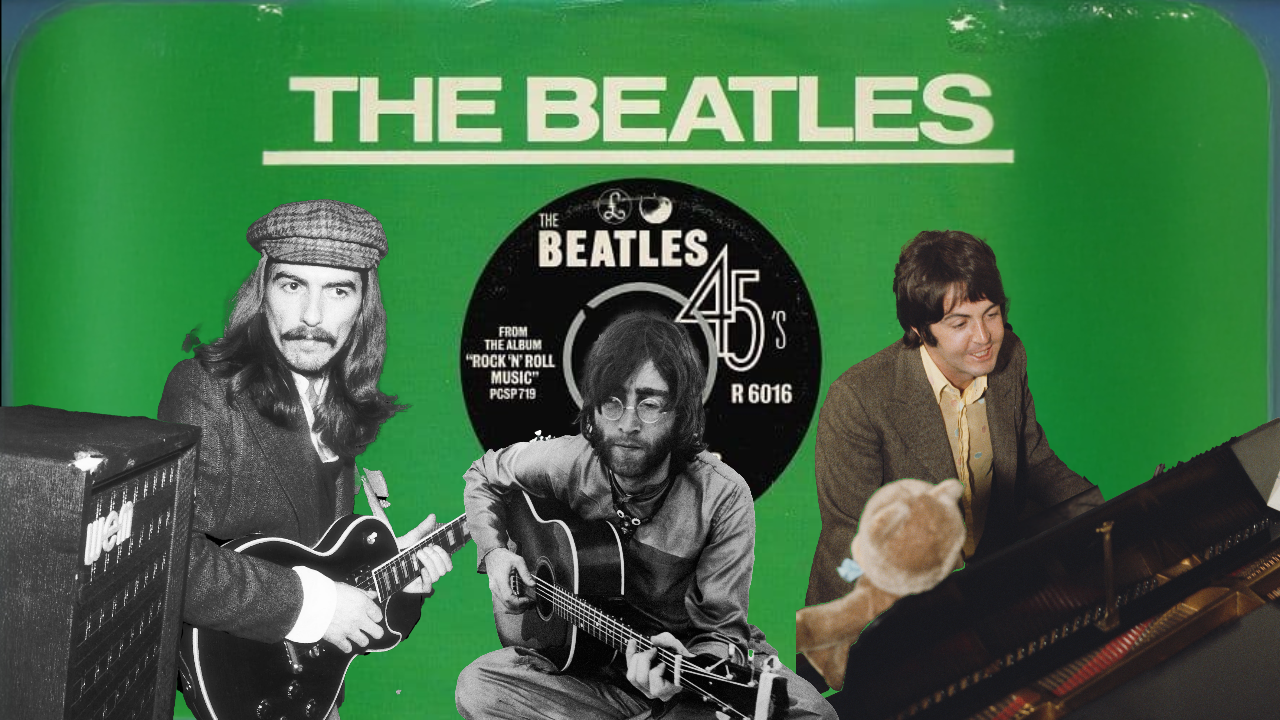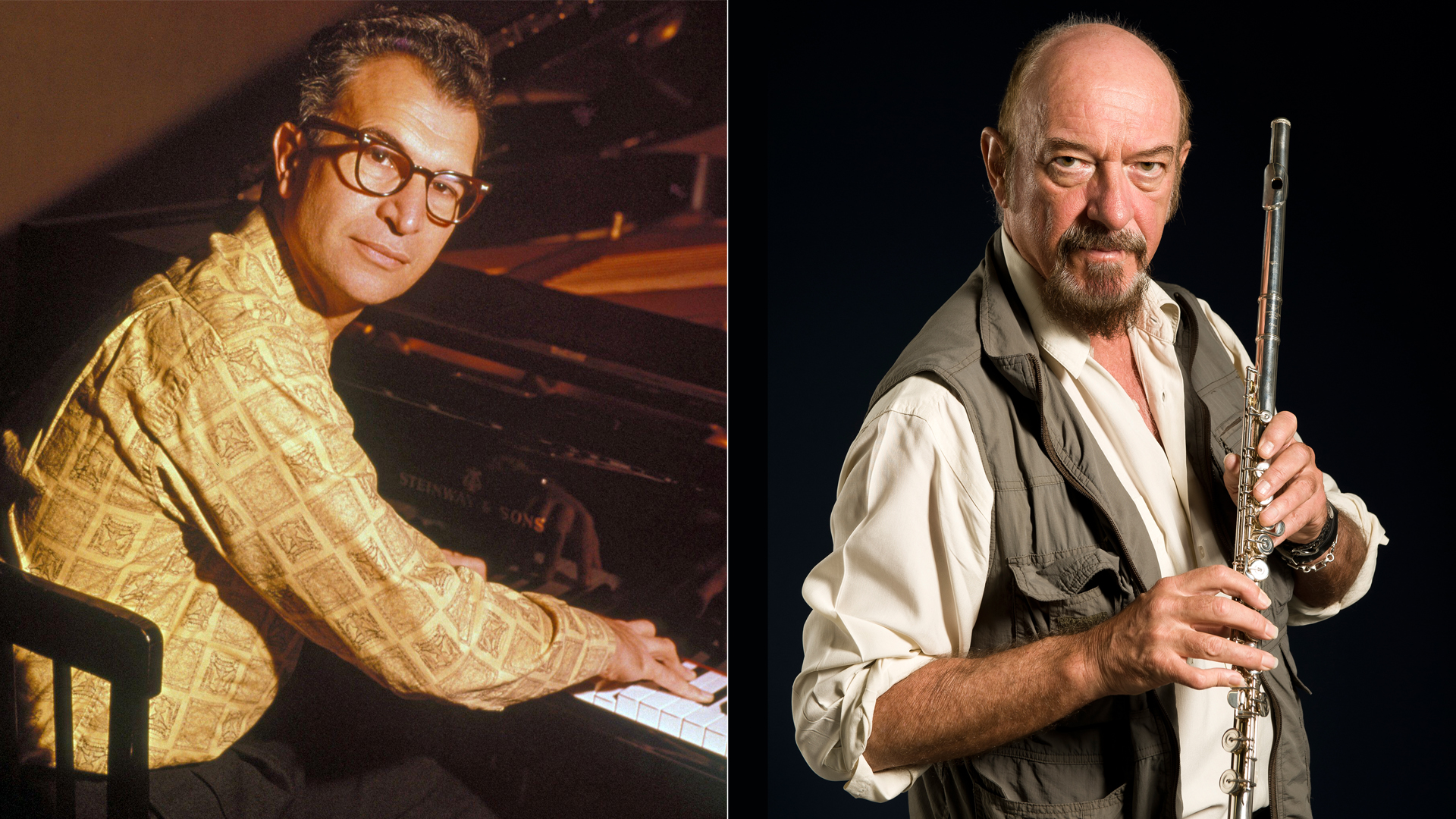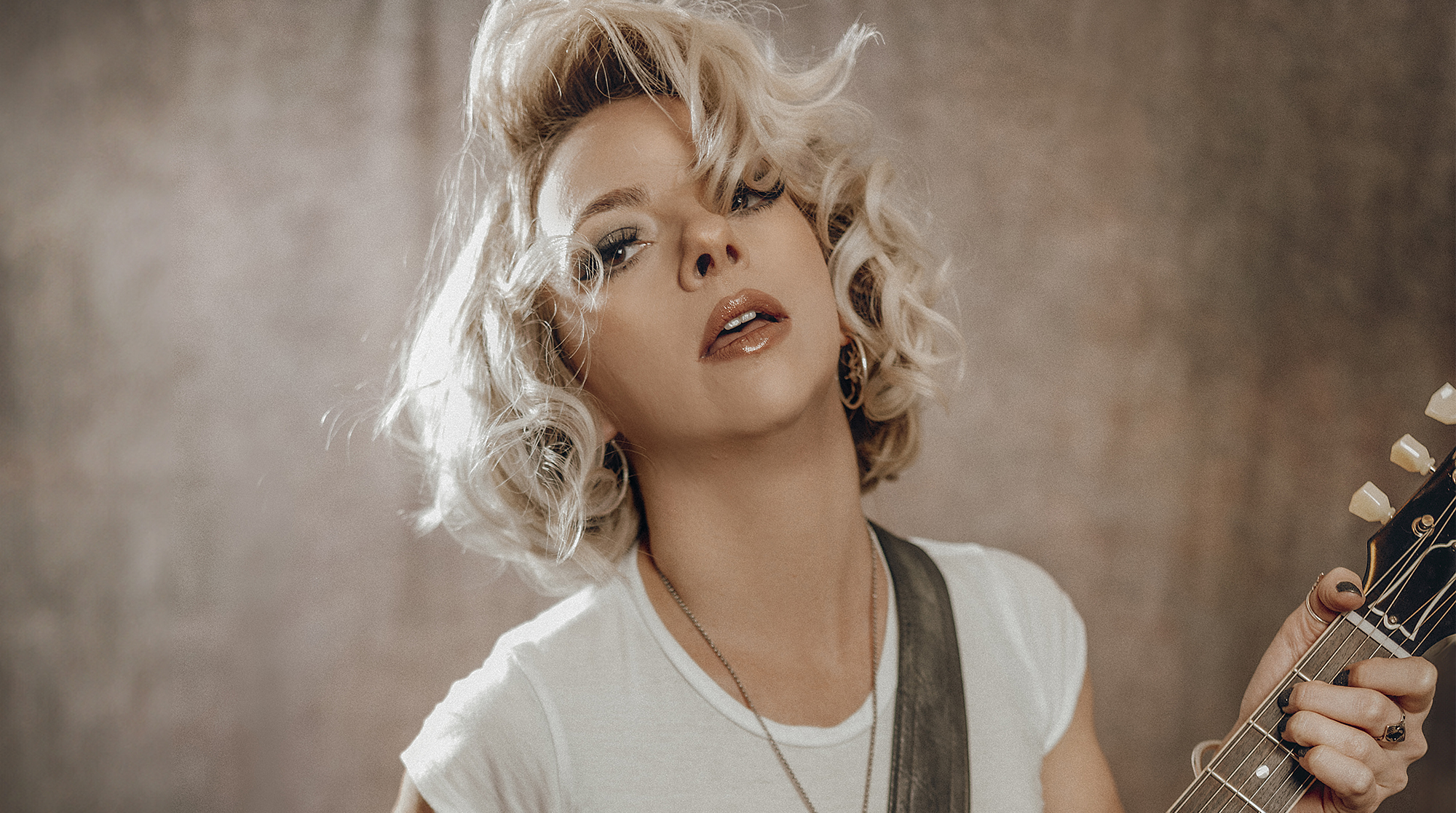Vintage, Rare and Cool as F**k: This Gorgeous Cast of 1950s Gretsch White Falcons is a Collector’s Dream
Gretsch author Ed Ball explains why the classic single-cutaway White Falcon remains a pinnacle of electric guitar design
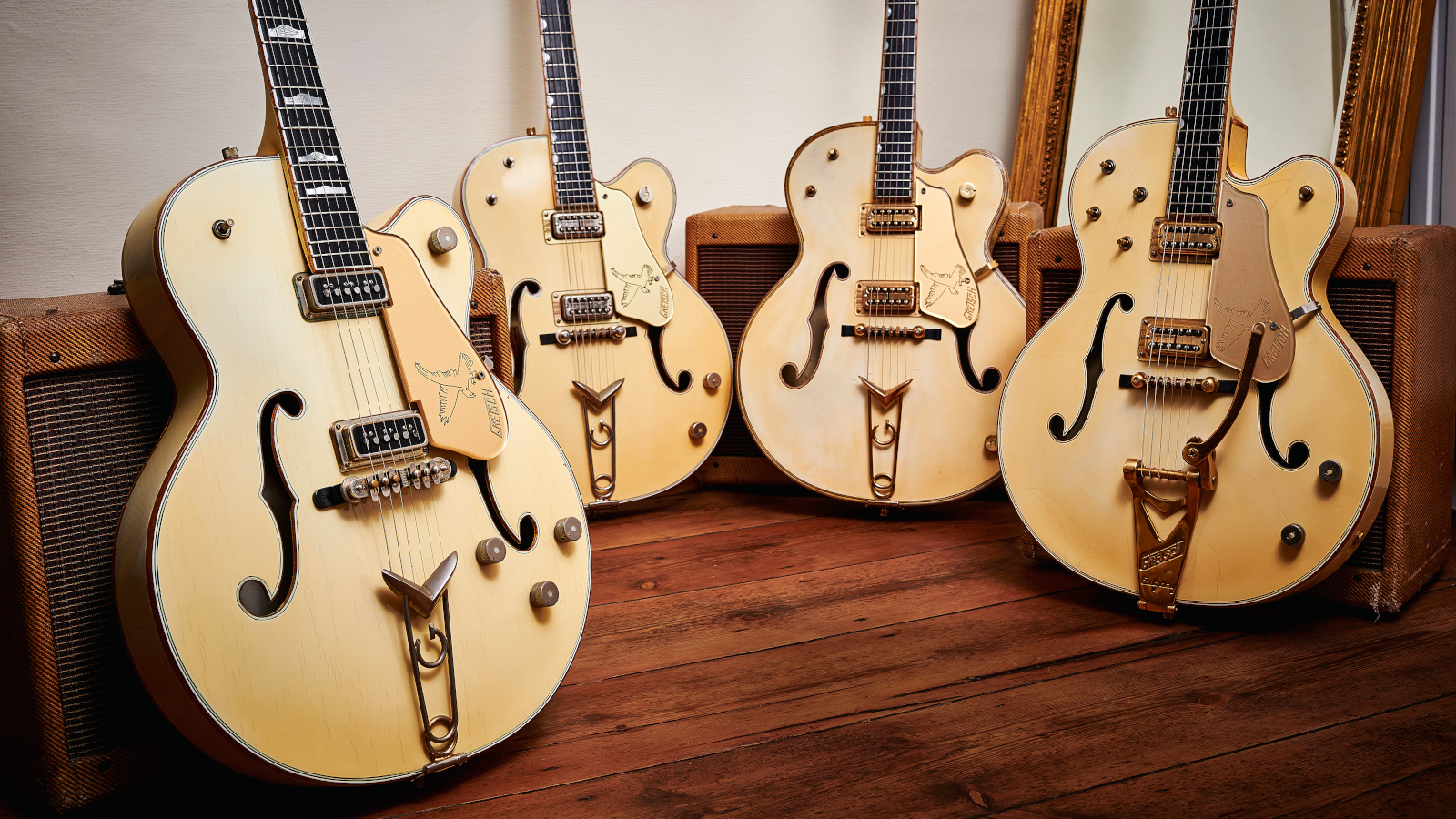
The Gretsch White Falcon was conceived as a one-off showpiece demonstration guitar, one that would grab people’s attention and draw them in with as much bling and over-the-top craftsmanship as Gretsch’s Brooklyn factory could muster.
Unveiled at the NAMM show in July 1954, the guitar created such a flap that Gretsch hatched a plan for the guitar to become a fully-fledged member of its electric guitar line.
The following year, the White Falcon debuted at the top of Gretsch’s pecking order as its most expensive instrument, retailing at $600, roughly $5,750 today.
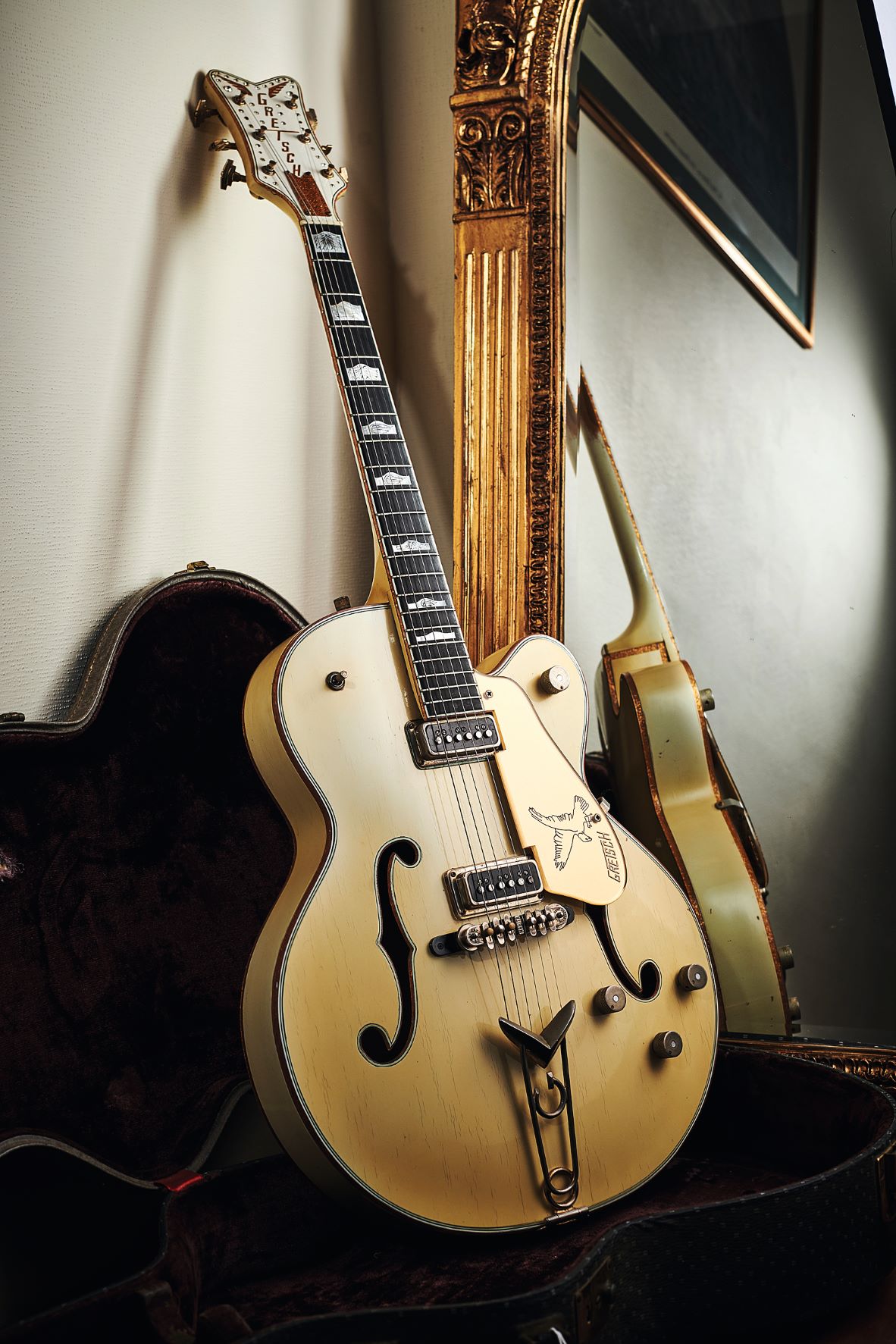
Much like Gibson’s flagship Super 400CES, introduced in 1951, the White Falcon was established as Gretsch’s crowning glory, and to this day it remains the superlative guitar for many.
It was my ultimate dream guitar
Anonymous British collector
“It was my ultimate dream guitar,” says the anonymous British collector who owns the 1950s single-cut Gretsches pictured here. “The first time I saw a White Falcon was onstage with Crosby, Stills, Nash & Young at Wembley Stadium in 1974.
“Neil Young and Stephen Stills played them a lot over the years. I used to look at the photographs when I was young and think, Wow! It was such a stunningly beautiful guitar and just something that I wanted to get one day.
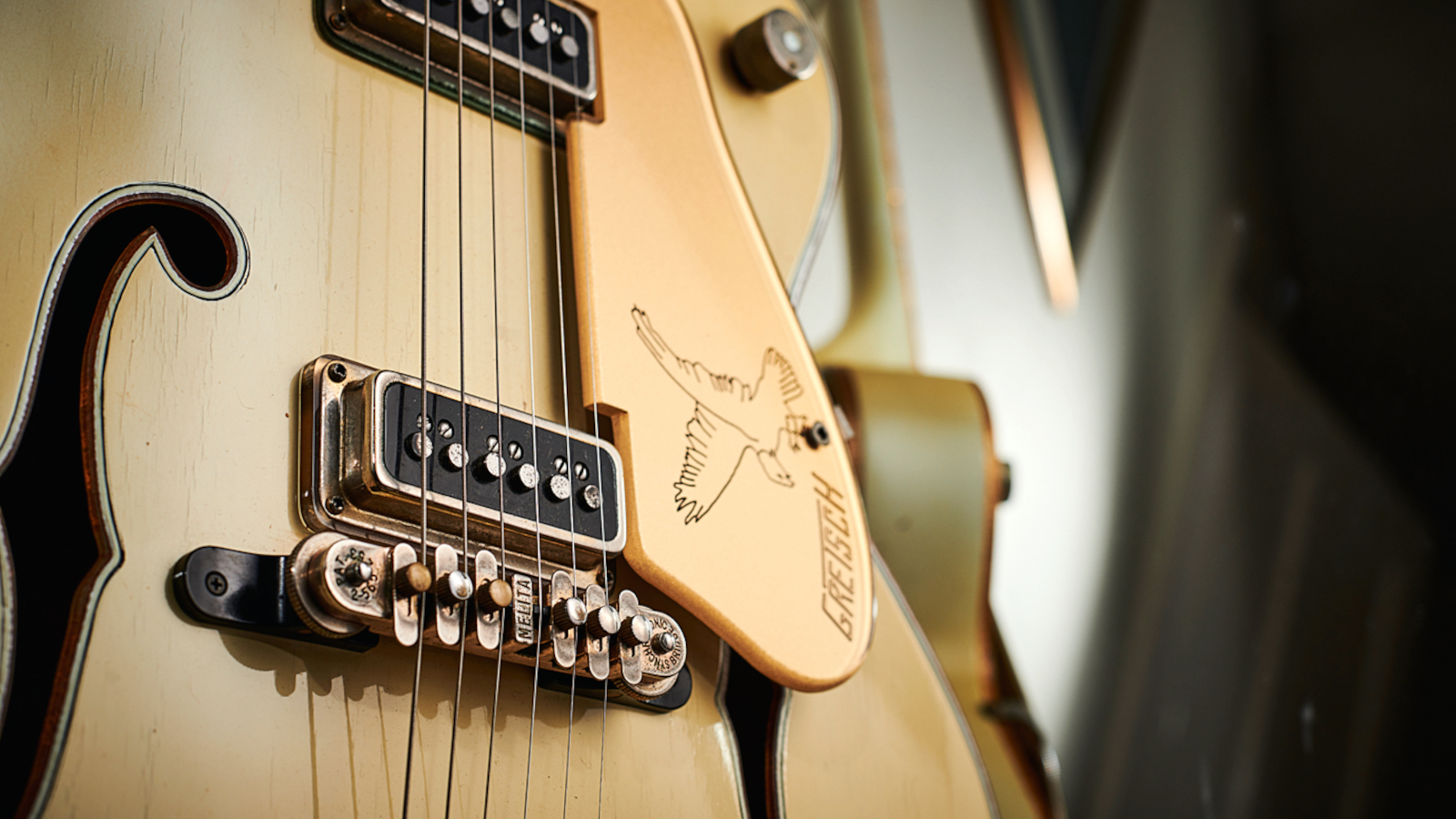
“I was totally captivated by them, and their rarity created a kind of magic. For me, it’s the holy grail of guitars.”
Get The Pick Newsletter
All the latest guitar news, interviews, lessons, reviews, deals and more, direct to your inbox!
For me, it’s the holy grail of guitars
Anonymous British collector
In fact, he had never seen one available for purchase in the U.K. until Brian Setzer’s 1956 example came up for sale in 1994.
“He’d sold it to Marco Pirroni of Adam and the Ants, who was then brokering it through Vintage and Rare Guitars on Kenway Road in London,” he recalls.
“It was hideously expensive: I could’ve bought two [Fender] blackguards that were in the shop at the time for the same price – a matching ’53 Esquire and ’53 Telecaster. But when they took it out of the case, I just thought, I’ve got to have that guitar!”
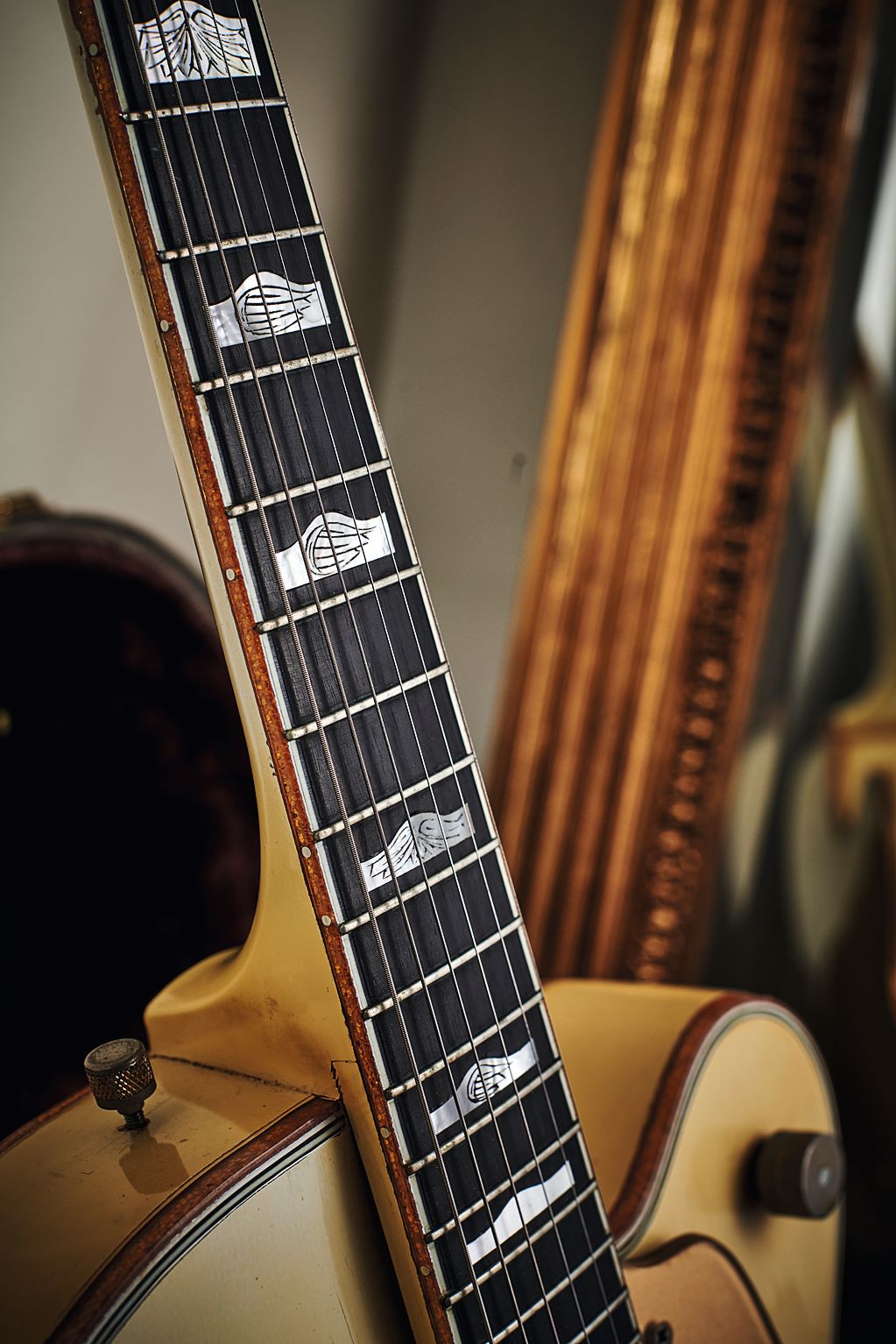
He bought it and was not disappointed. “It totally lived up to my expectations,” the collector continues. “So I bought it and was smitten from then on. It’s like a Fabergé egg. It’s just fantastic.”
The other three in his collection – a ’58 mono 6136, a ’59 6136 and a ’59 stereo 6137 – were acquired from the United States.
There’s something about the White Falcon that conjures up that amazing time of rock and roll
Anonymous British collector
“I did have a ’60 thinline, but it didn’t seem to have the same magic. The earlier ’50s ones generally have a body depth of 2¾ inches, but when Gretsch reduced it to 1 7/8 inches [in 1960], the feel of the guitar completely changed.
“I think the magic stopped in ’59. I can’t imagine them being produced in any other era than the ’50s. They’re very much of that time. They really capture the ’50s era well, and there’s nothing else like it.
“I’ve got a blackguard Tele and some other ’50s guitars, but there’s something about the White Falcon that conjures up that amazing time of rock and roll.”
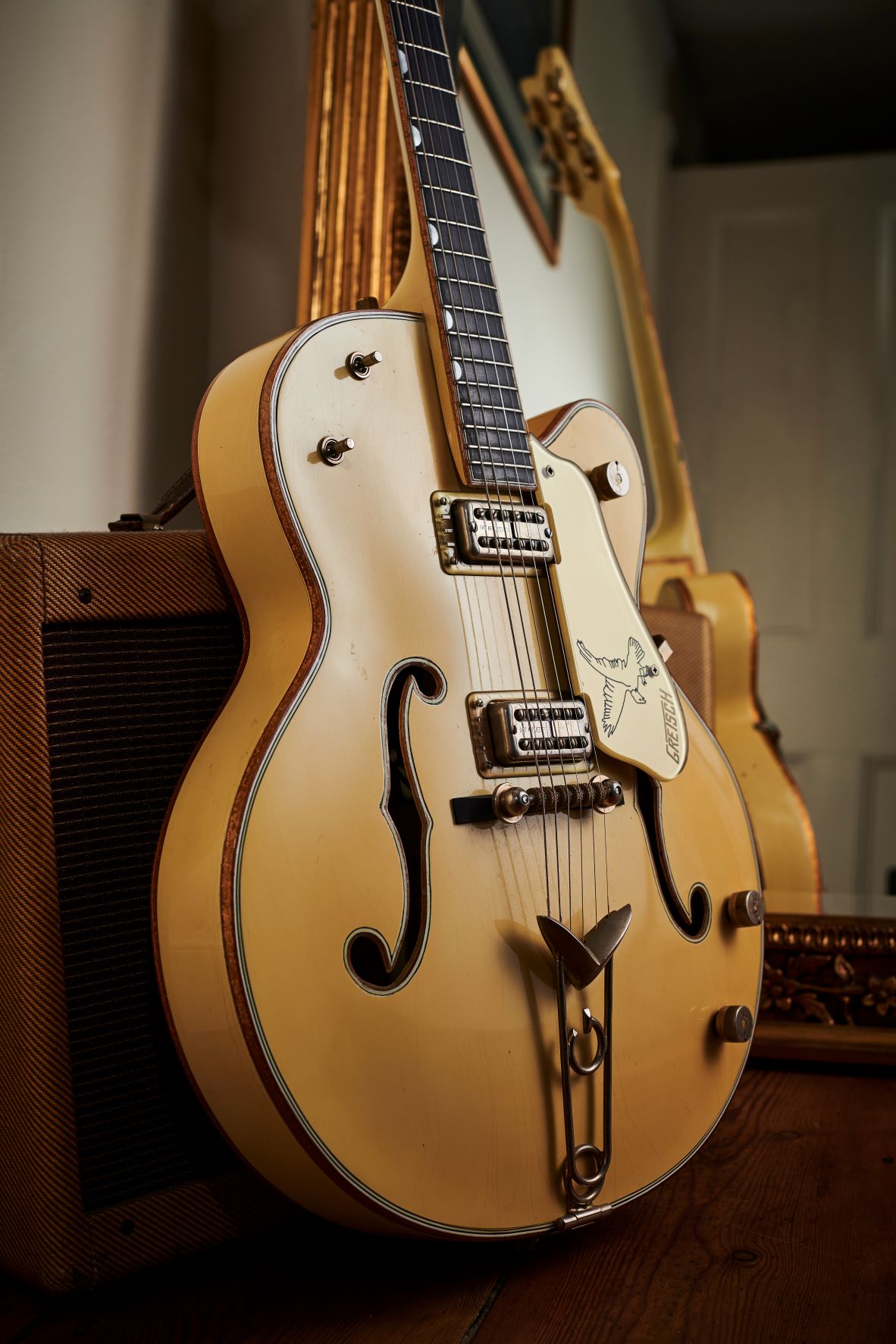
If Fender’s and Gibson’s electric guitar designs embraced the styling of hot-rod culture, then the White Falcon – Gretsch’s “Cadillac of guitars” – embodied the zeitgeist of the 1950s.
Adorned in gold, and finished in a dazzling white automotive-style paint, it mirrored with equally lavish elegance the angular, futuristic geometry of dream cars through its Cadillac V emblem tailpiece, V-contoured headstock and truss-rod cover, and Grover Imperial stair-step tuners.
Guitars and cars have always gone together
Ed Ball
“Guitars and cars have always gone together,” says Ed Ball, author of Ball’s Manual of Gretsch Guitars: 1950s. “It’s the same mentality. There’s a ‘cool’ factor, there’s an aesthetic factor, there’s a macho factor, and I think Gretsch saw a parallel there.
“They even named their guitars after cars: they had the Corvette model, the Streamliner and the Convertible, and they used automotive references like Cadillac Green in their color scheme. Research has shown that the paints were right off the DuPont automotive paint chip library.
“I can’t say I’ve had a White Falcon tested, but my guess is they would be the same. White Falcons have an opaque white finish, and it yellows to a kind of ivory over the decades. To see a brand-new one in the ’50s must have been blinding, especially with all that 24-karat gold!”
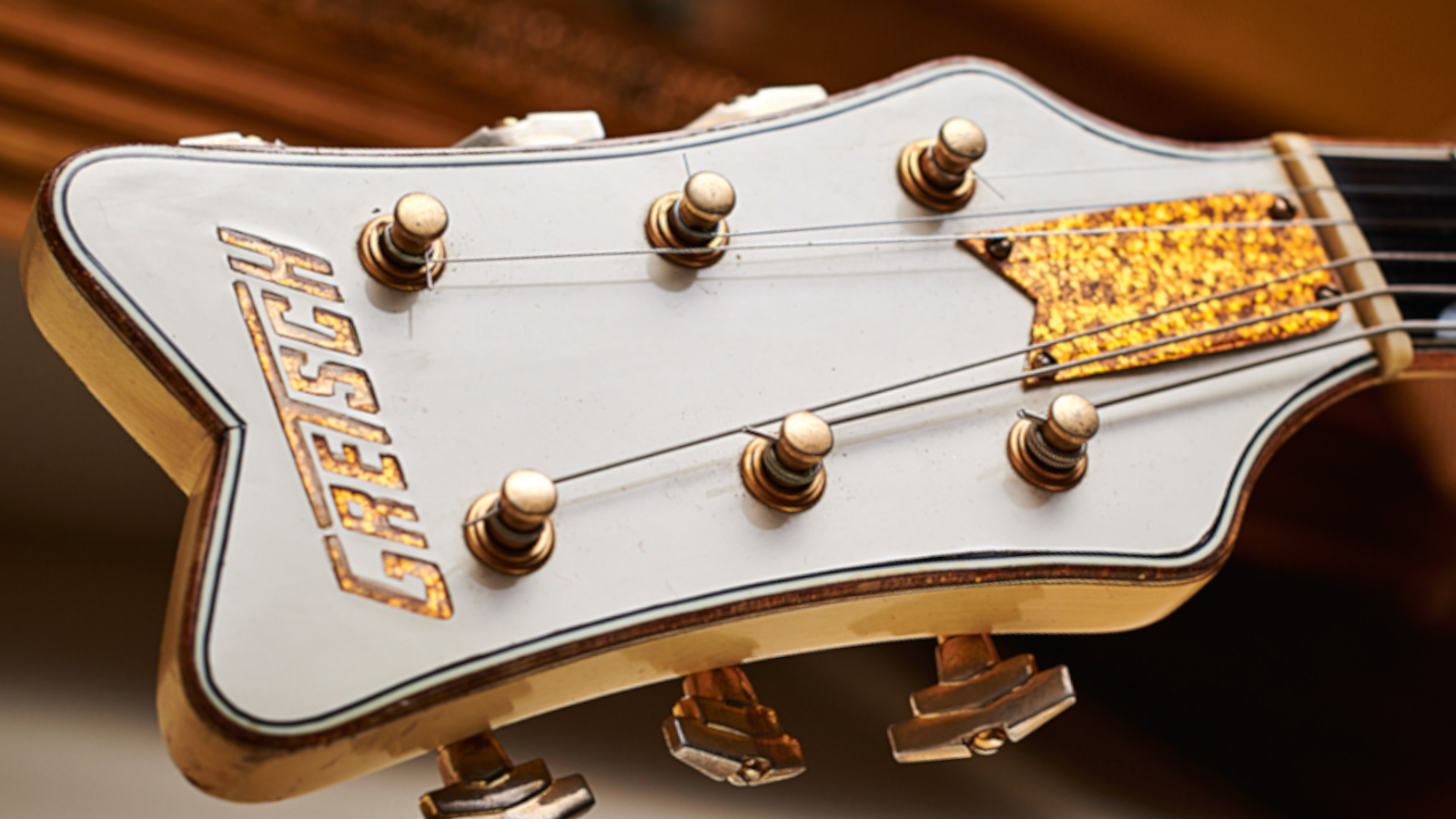
“So much of the Gretsch aesthetic was taken from the automotive industry, including their marketing tools,” Ball continues. “Take their famous 1955 Guitars for Moderns brochure: Catalogs usually just went out to music stores, but they put copies of this one in magazines that went out to consumers directly.
So much of the Gretsch aesthetic was taken from the automotive industry, including their marketing tools
Ed Ball
“It was also Gretsch’s first color consumer-focused catalog, and if you look at car pamphlets from the same period, they look very, very similar. It was glossy, colorful and full of photos, and the White Falcon was one of the four models that appeared on the cover in full color.”
Featured on page two alongside an endorsement from jazz guitarist Mary Osborne, the White Falcon’s advertisement explained, “Cost was never considered in the planning of this guitar… This beauty is 17-inch[es in] body width and in the new thin model that’s so comfortable to play.
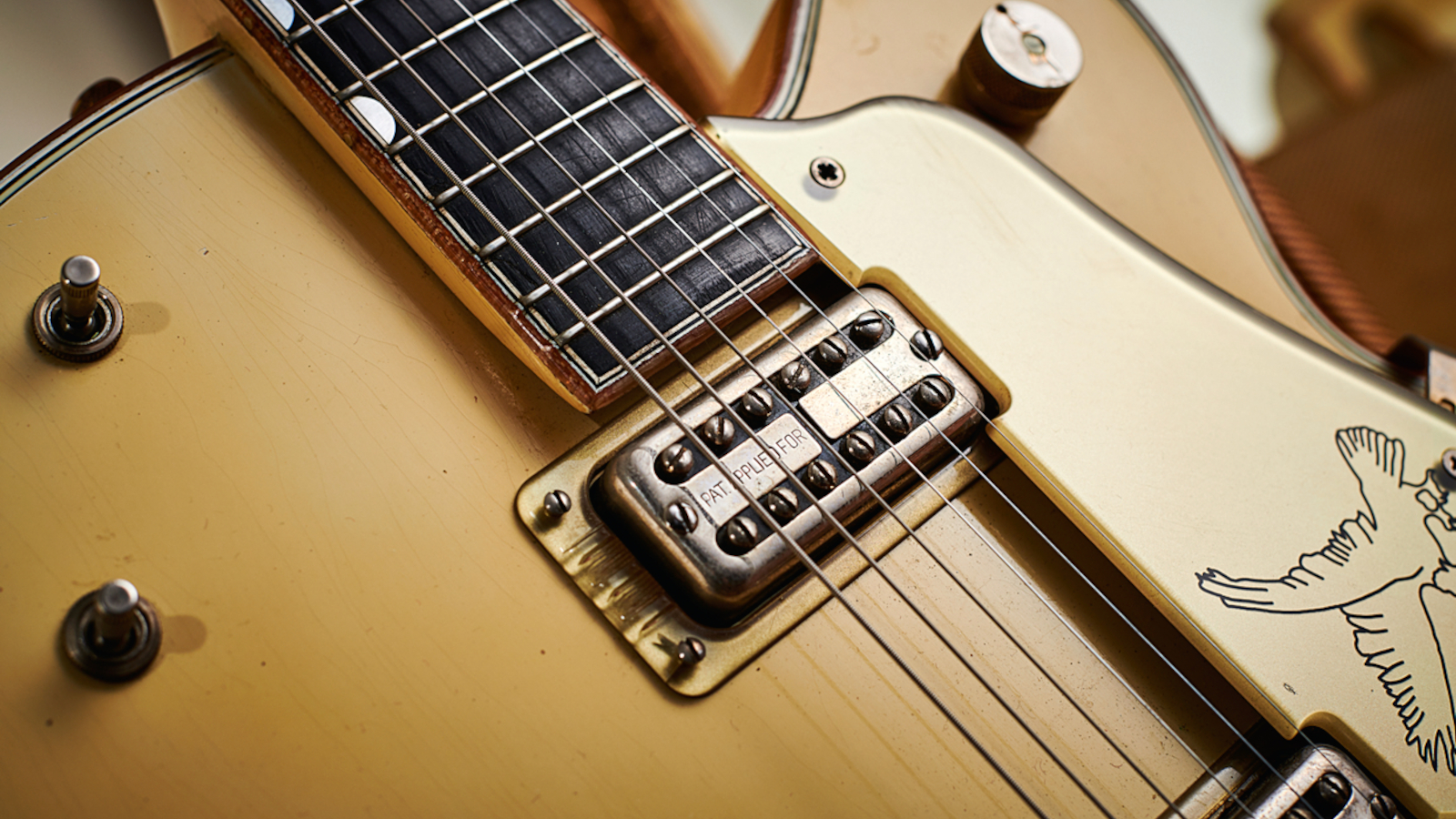
“It is finished in gleaming white with gold sparkle binding on f-holes, body edges and fingerboard. Choicest spruce top and maple for the body and neck; finest Madagascar ebony fingerboard with pearl positions, engraved and inlaid in gold. Unique handmade tailpiece of tasteful modern design.
The finest guitar we know how to make – and what a beauty!
Gretsch 'Guitars for Moderns' brochure
“Grover precision 16-to-1 ratio machines for hairline tuning. Twin Gretsch-Dynasonic pickups with five Gretsch controls to make them even more effective. All metal parts heavily plated in 24-carat gold. The finest guitar we know how to make – and what a beauty!”
Evidently, Gretsch’s “finest” instrument represented the pinnacle of its guitar-building prowess. However, with significant production costs dictating relatively high retail prices (and, therefore, an inevitably lower demand), White Falcons were tentatively produced in very small numbers in the ’50s.
After all, “cost was never considered in the planning of this guitar” when guitarist – and Gretsch ambassador – Jimmie Webster conceived the idea.
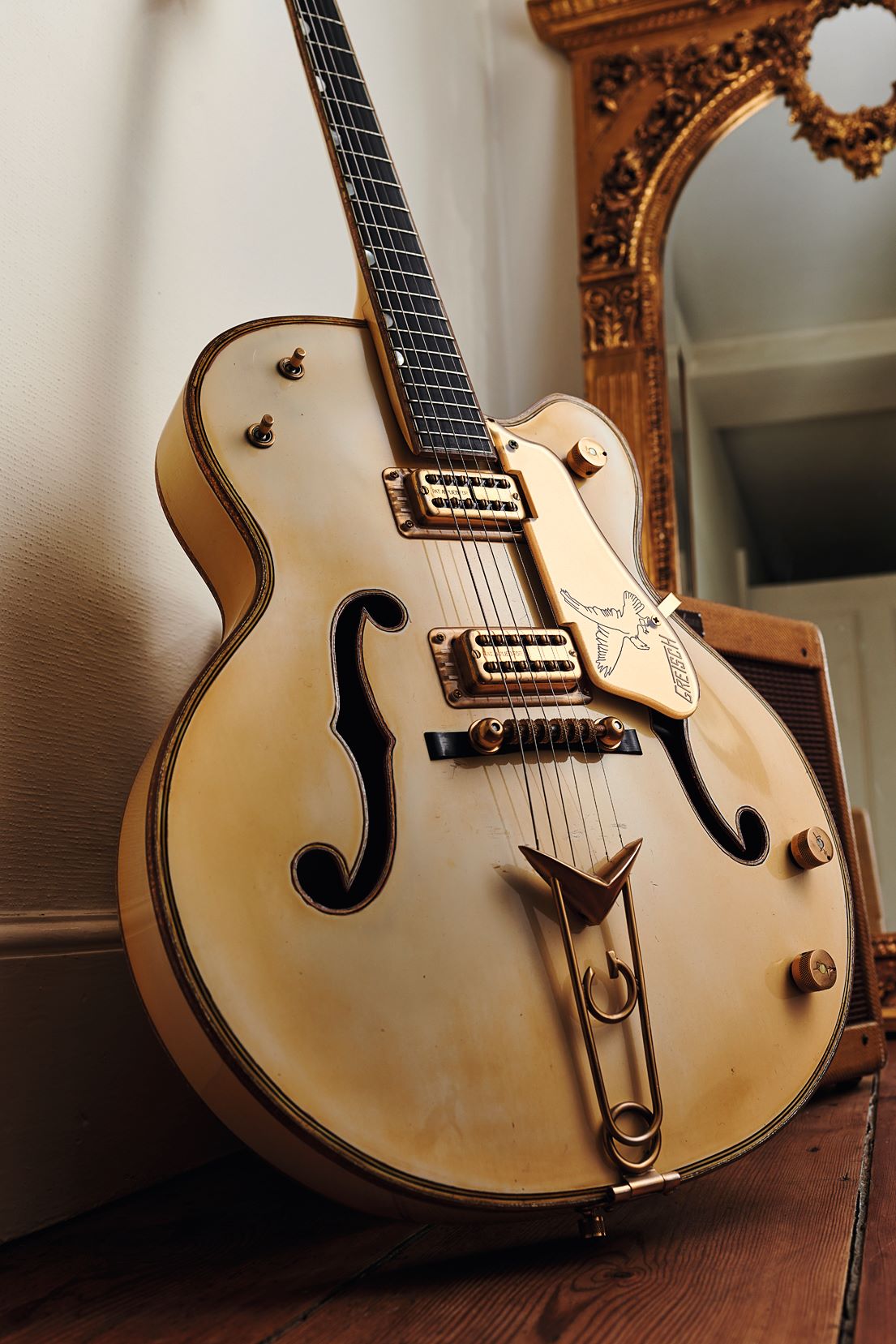
“Legend has it that it was Jimmie Webster’s dream child, and he convinced Gretsch to make just one, for him,” Ball explains. “He demonstrated Gretsch’s products as a contracted consultant, but his impact clearly extended to design contributor, not only in terms of aesthetics but also function.
Legend has it that it was Jimmie Webster’s dream child, and he convinced Gretsch to make just one, for him
Ed Ball
“He was a main player in their design group. He wanted Gretsch to make an over-the-top guitar that turned heads when he was in a crowd at NAMM or in a demo. The White Falcon was intended for demonstration, but he showed it around a lot, and it created a huge buzz, so they decided to make more.”
Ball believes that first White Falcon was built in early 1954, well ahead of that year’s July NAMM show.
Gretsch typically made guitars in batches of 50 or 100, and the prototype White Falcon – which Webster allegedly passed along to Osborne – has the serial number 13450, which places it among the batch of Streamliners and Duo Jets with serial numbers starting from 13400, some of which have pot codes dating to early ’53.
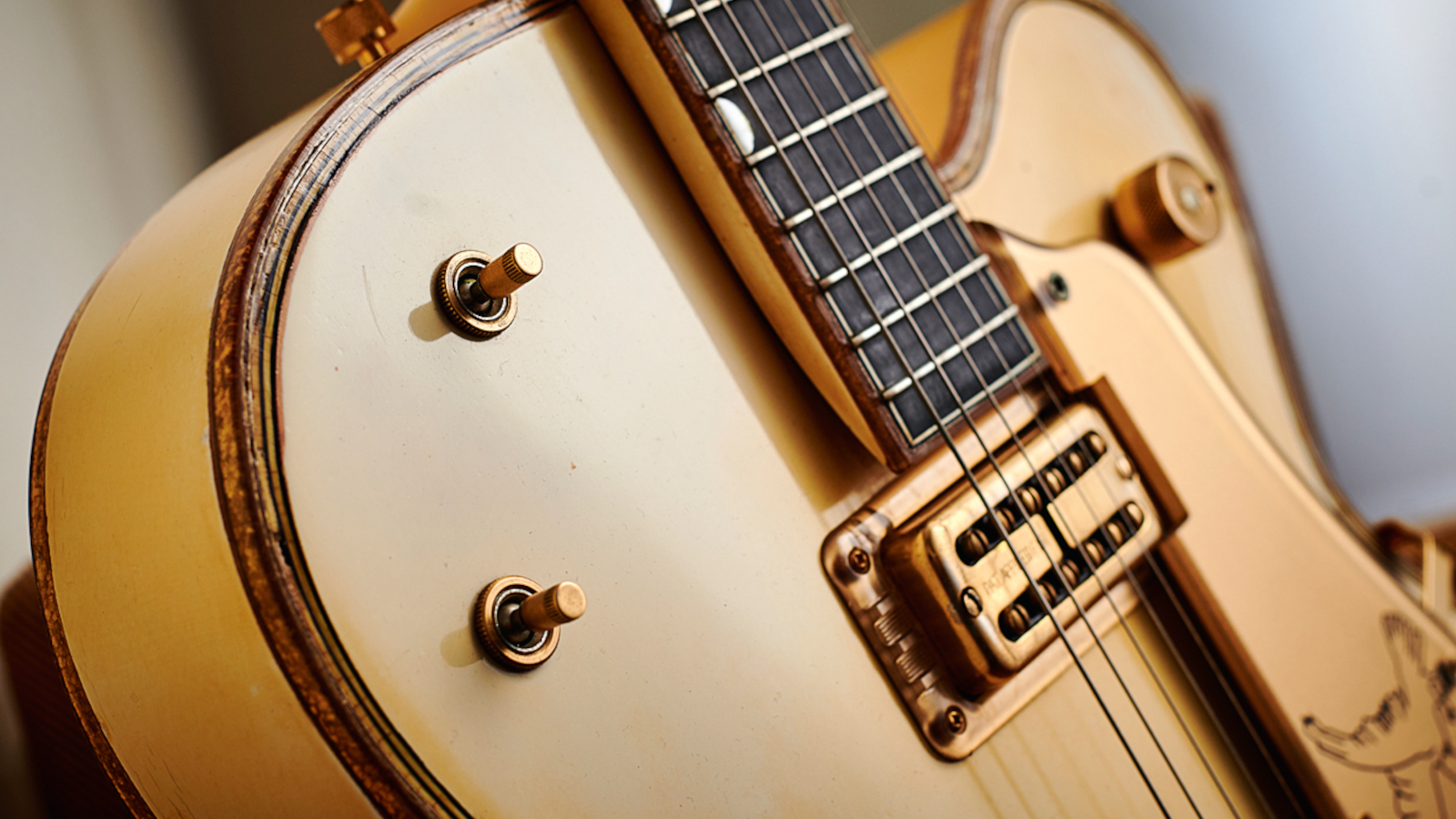
“As a point of reference, the 6120 [Chet Atkins Hollowbody] prototypes that Gretsch gave to Chet [in early ’54] weren’t made until the 13700 batch,” Ball explains. “People often presume the White Falcon came later, but the prototype White Falcon [from batch 13400] would have been about 300 guitars before those.”
Maybe one of the reasons they didn’t make that many of them was because they were very difficult to produce
Ed Ball
Gretsch’s new masterpiece created so much excitement that the company found it hard to resist demand. But not everyone was thrilled by the White Falcon. Gretsch’s shop-floor staff was filled with apprehension at the thought of having to build such a high-end guitar on a repeat basis.
“Dan Duffy, the QC manager, said the White Falcon was so difficult to manufacture that they all just hated it,” Ball recalls. “Maybe one of the reasons they didn’t make that many of them was because they were very difficult to produce.
“They weren’t production friendly. I think it really was a show thing originally, and they got so much great feedback that within a year they decided they would go ahead and put it out as a regular model.

“The debut Falcons were in a mixed batch along with the debut Convertible model and a couple of acoustic models. There may be only 20 to 25 White Falcons in that first batch for 1955. Very few. I’ve found one in that batch that had a June 1954-coded pot, which gives you a sense they were probably making those at the end of ’54 for the ’55 model year.”
There were fewer than 100 of them made in the first two years
Ed Ball
Just as the American automotive industry manufactured new models of cars in the year preceding their release, Gretsch typically made new or updated models of guitars for release the following year.
“After that first ’55 batch, there were two ’56 batches, one containing 25 Falcons and the other around 40 to 45. So there were fewer than 100 of them made in the first two years,” Ball explains. “I have not found evidence of a batch that falls anywhere close to the ’57 production year, but they did a fourth batch of 100 in ’58.
“I have one data point for a second potential 50-unit batch in ’58, but I’m waiting for it to be substantiated. The ’59 batch was 31450 through to 31499, so that’s 50 guitars. John Entwistle owned one from that batch, as did Stephen Stills. I was interested to find out that David Gilmour had a ’58; I didn’t realize he had a Falcon until it came up for auction.
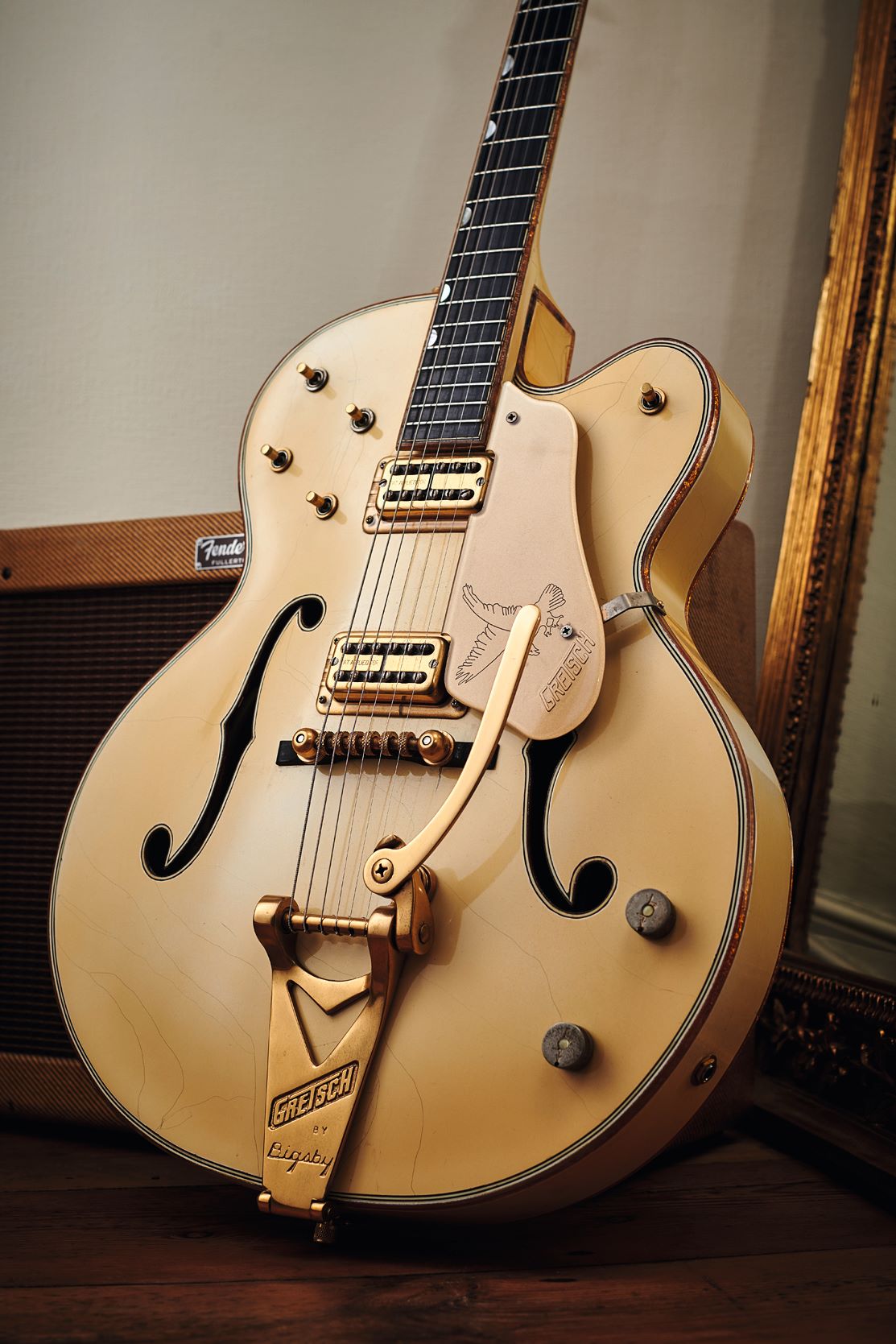
“Some of these guys have them but they rarely sell them. When you talk about ’50s Falcons, there’s maybe five batches with 200 to 250 guitars maximum in total. That’s pretty sparse – even compared to Les Paul ’Bursts!
I think the ones from ’58, ’59 and ’60 that are still single-cut are cool aesthetically, but they also have trestle bracing
Ed Ball
“I think the ones from ’58, ’59 and ’60 that are still single-cut are cool aesthetically, but they also have trestle bracing, and I think that’s why players tend to lean toward those. Gretsch must have thought, We’d better put some more structure in these hollowbodies because these guys are starting to play loud!
“It was probably fine if you’re doing Jimmie Webster tapping or chicken pickin’ at low volume, but if you’re playing at high volume, you’re going to want some structure in there to avoid feedback.
“Most feature changes on Falcons were in ’58. That’s when trestle bracing, Filter’Tron humbucking pickups and neoclassic fretboard markers were brought in. Those are the big changes.”
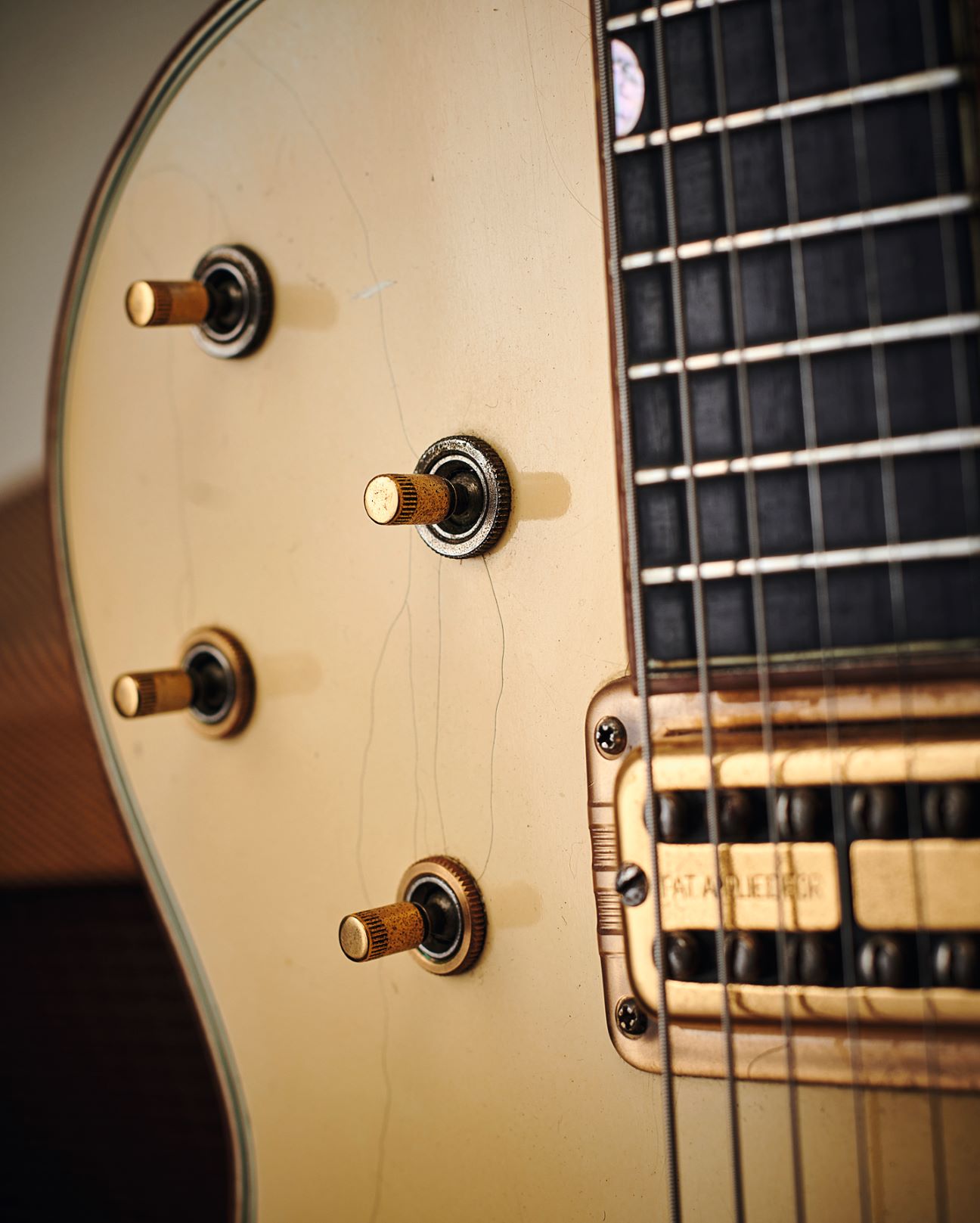
The White Falcon was among the first Gretsch models to receive a double-cutaway body in 1960.
The first 1960 batch – of 100 – has a mix of single- and double-cutaway bodies
Ed Ball
“They kind of cleared out the old inventory and brought in the new style with the double-cutaway,” Ball explains. “The first 1960 batch – of 100 – has a mix of single- and double-cutaway bodies. They went on to make a lot of batches of double-cutaways in the mid-’60s.
“That was the George Harrison boom. Gretsch’s production tripled for all models in those three years after the Beatles appeared on The Ed Sullivan Show [in 1964]. And then it fell off the cliff in the late ’60s.”
The White Falcon’s remarkable expense meant that few guitarists could possibly afford to get hold of one, which is one reason why so few exist.
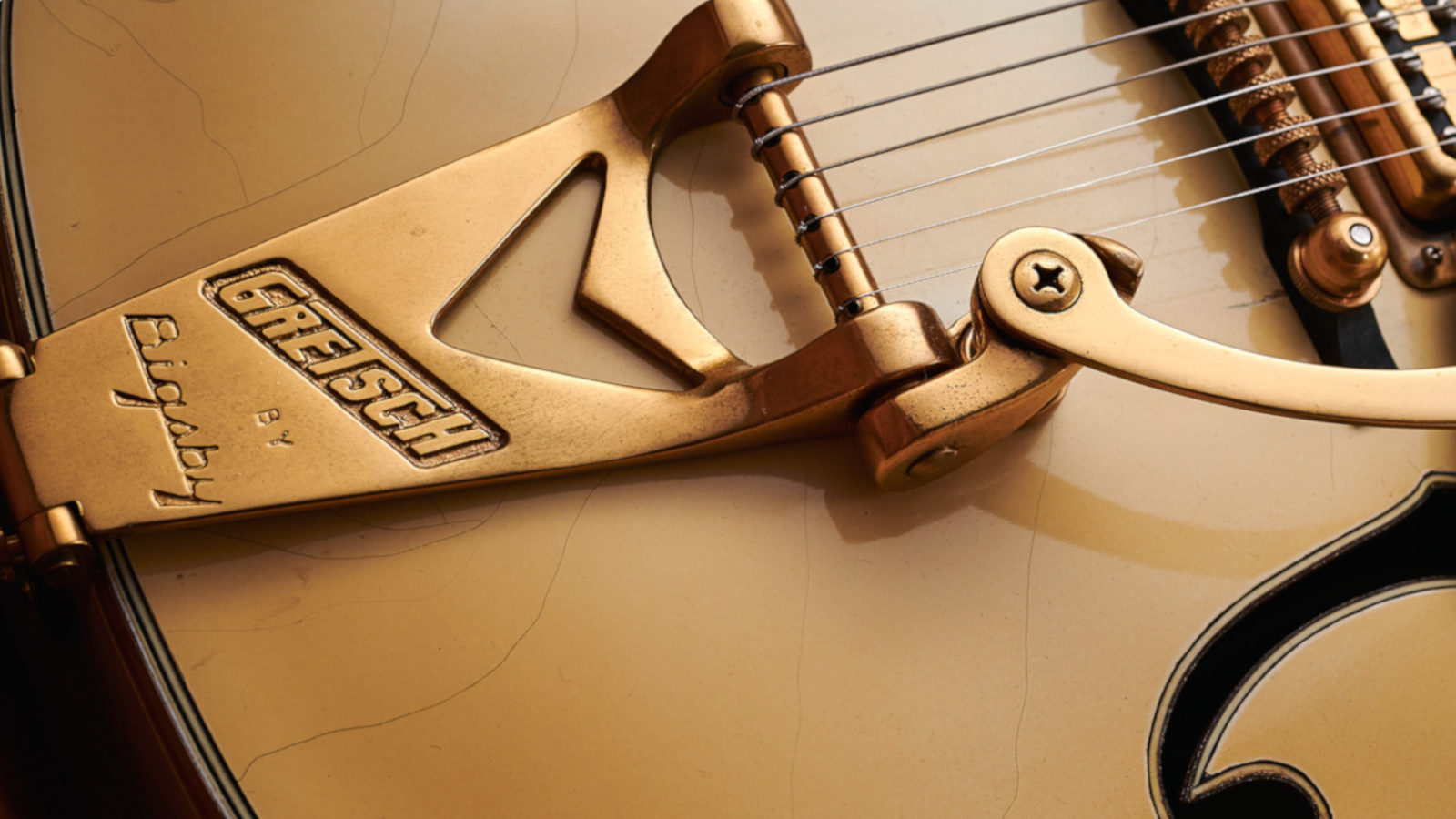
“They were made in such limited quantities that you wonder what kind of access retailers across the U.S. and overseas would have had to them,” Ball notes. “If there were literally no more than 25 made in 1955, who got them? Famous rich people or musicians?
“There was no such thing as collectors back then. Retailers may have bought a White Falcon just to have on the shelf, or as a window item to bring appeal.
“They just look so damn cool!”
Guitar Player thanks Ed Ball, author of Ball’s Manual of Gretsch Guitars: 1950s and Gretsch 6120: The History of a Legendary Guitar (Schiffer Publishing). Visit gretschguy.com for more information.
Rod Brakes is a music journalist with an expertise in guitars. Having spent many years at the coalface as a guitar dealer and tech, Rod's more recent work as a writer covering artists, industry pros and gear includes contributions for leading publications and websites such as Guitarist, Total Guitar, Guitar World, Guitar Player and MusicRadar in addition to specialist music books, blogs and social media. He is also a lifelong musician.
“A guitar with a wonderful history and many stories to tell”: Robert Plant is selling gear for charity and only one guitar remains – a golden-era Strat with a storied history
"It's a powerful, versatile variation on the timeless Telecaster, with a vital back story to boot." We review the Fender Stories Collection Mike Campbell Red Dog Telecaster

